Results 851 to 860 of 982
Thread: J-Nat club
-
05-08-2019, 12:49 PM #851

I think what’s a kiita depends on if you’re selling or buying Oz! Lol. Here are 4 examples.
The left stone is a rich orangish-yellow Nakayama koppa from Alex Gilmore’s ‘hoard’ stones, the second from left is a Hatanaka maru-ka also from Alex and classic yellow kiita color. The other two have very little yellow at all, they’re a shade of brown with a greenish tint. The right most stone is what many folks call tamago or egg color, a darker stone that at first glance looks kind of yellow but really isn’t so much.
The color isn’t quite perfect but close, and as Jerry noted, depends on the lighting.Last edited by Steve56; 05-08-2019 at 12:52 PM. Reason: Add image
-
05-08-2019, 01:10 PM #852

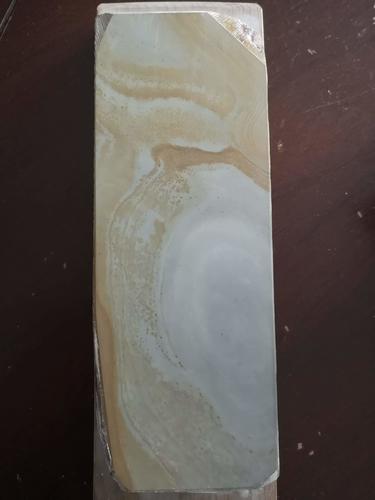
Oz here's your stone's big sister. They are apparently drawn to each other, as mine has traveled around the globe, so now they're just hours apart... Sitting here in Canberra As the time passes, so we learn.
As the time passes, so we learn.
-
05-08-2019, 01:16 PM #853Senior Member

- Join Date
- Feb 2014
- Location
- Oklahoma City
- Posts
- 220
Thanked: 71
-
05-08-2019, 02:15 PM #854

Nice stones Steve. I always enjoy seeing pics from your collection.
To me kiita is yellow. I understand that sometimes it's hard to tell kiita and asagi apart, I have seen discussion where the slurry is supposed to dry white on asagi and ivory on kiita etc.
If I am buying a kiita I expect a color from bright yellow to somewhat brownish.
The first is a nice yellow stone, the pic is from me trying to raise slurry with atoma 1200, hard stone.
The second Shinichi called Tamagoiro and is a brownish yellow.
Third one has brownish tendencies as well and loaded with nashiji.
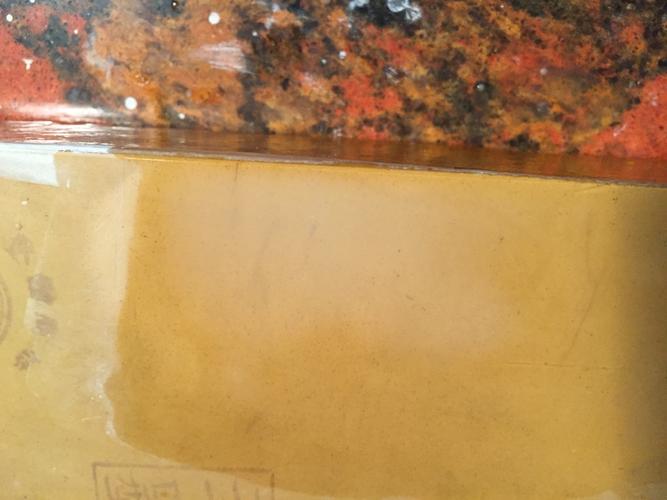
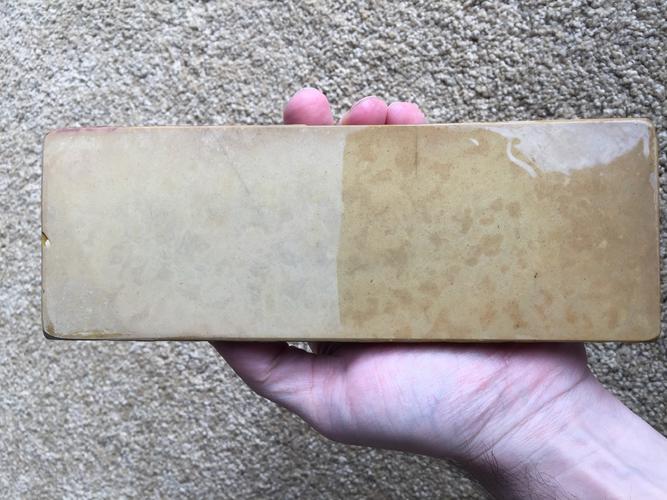
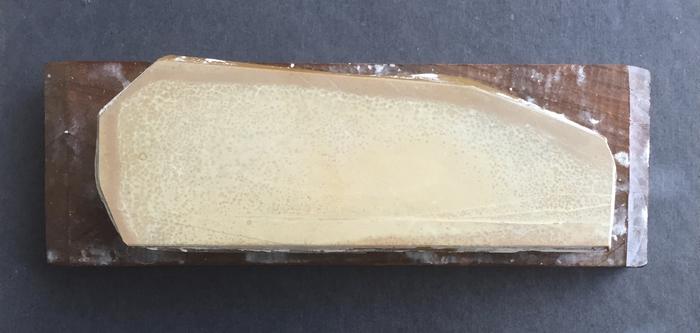
-
05-08-2019, 04:08 PM #855

The kiita question raises another, is a grey stone with little or no blue asagi? Asagi means blue of course, mizu asagi is ‘water blue’.
First is a mixed stone that I got from Takeshi back in the good old days about 10 years ago. It’s about half kiita and half asagi, the robin’s egg blue kind. So is it a kisagi or an asiita? Lol. Nature likes to tease those of us that like concise definitions and neat pigeon holes.
The second is a grey stone. Many would call it asagi but there is little if any blue in it. It’s just a grey stone with a greenish tint. I chose this stone for the eye candy value because the pattern is uncommon for a couple of reasons. It’s called ‘suminigashi’ which means ‘marbled’, and is named after the pattern of ink on hand-made art papers. It’s a more common name talking about steel patterns in Japanese knives. But this pattern in stones is fairly uncommon, and the only jnat pattern that I can think of that isn’t named after something in nature.
-
The Following User Says Thank You to Steve56 For This Useful Post:
Steel (05-09-2019)
-
05-08-2019, 04:38 PM #856

Not a linguist or Japanese speaker so I am going by Fikira's site. He has Asagi translated as light yellow, mizu which is water gives mizu asagi, blue like water etc. Now this comes probably from google translate and I would be interested if a Japanese speaking person can correlate that. The colors he shows under asagi range from grey to green to yellow. I think that's where the occasional confusion of what's kiita and what's asagi comes from, when you hit the yellow spectrum.
One thing I can add is when I see stones where the yellow meets the grey - I like that a lot.
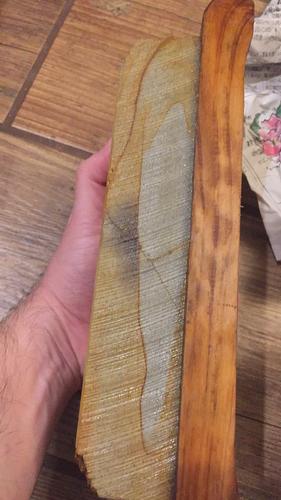
-
05-08-2019, 05:35 PM #857Senior Member

- Join Date
- Feb 2014
- Location
- Oklahoma City
- Posts
- 220
Thanked: 71
-
05-08-2019, 05:40 PM #858

Those stones with a pronounced ‘bubble’ structure of lighter material with yake around the bubble is a tell for a Nakayama or a close by mine - it’s what’s caused the yake pattern in the harder stones above that I posted.
Asagi, I believe, refers to an egg color, but it’s a blue egg like a robin’s egg or a blueish green color. Here’a link to asagi colored cashew laquer at hyper-cafe, it isn’t yellow, though it could be considered a yellowish blue. Maybe.
Cashew Urushi Asagi (87)HyperCafe Japanese Sword Shop, providing the supplies and fittings for various Nihonto swords, as Shinken, Katana, Iaito, Nihonto,Gendaito,Samurai Swords, Tachi,Tanto, Wakizashi, and Antique Swords for martial arts for the pra
-
05-08-2019, 06:17 PM #859

Id be interested if there was a website that identified Jnats. I know it would still be someones opinion but if some of the masters have done this it could be helpful. Anyone know of any?
Guessing here but I think my shobu 100 i bought 3 or 4 years ago is an Asagi. Although its just a gray in color. Its hard, but not as hard as other Asagi stones.
This identifying website would need to be broke down in mines too.It's just Sharpening, right?
Jerry...
-
05-08-2019, 06:31 PM #860

There’s no real website or book that does that definitively, partly because many of the signs or ‘tells’ were common to more than one mine. It wasn’t a big place. All of the eastern mines, the ones that produced the finest razor hones, were all within a day’s walk from Kyoto, and as Alex Gilmore has said many times, a lot of the mines were within a good golf shot of each other - so the geological differences or difference in appearances were sometimes quite small.
The only definitive sign that I know of is the black, sparkly, burnt toast skin that’s unique to Nakayama, per Alex.
There are other signs of course, a cloudy structure, namazu-filled lines, the ‘ring’ or kan pattern, etc but several mines shared these, none of them are unique to a specific mine.
-
The Following User Says Thank You to Steve56 For This Useful Post:
Gasman (05-09-2019)


 2050Likes
2050Likes LinkBack URL
LinkBack URL About LinkBacks
About LinkBacks







 Reply With Quote
Reply With Quote


